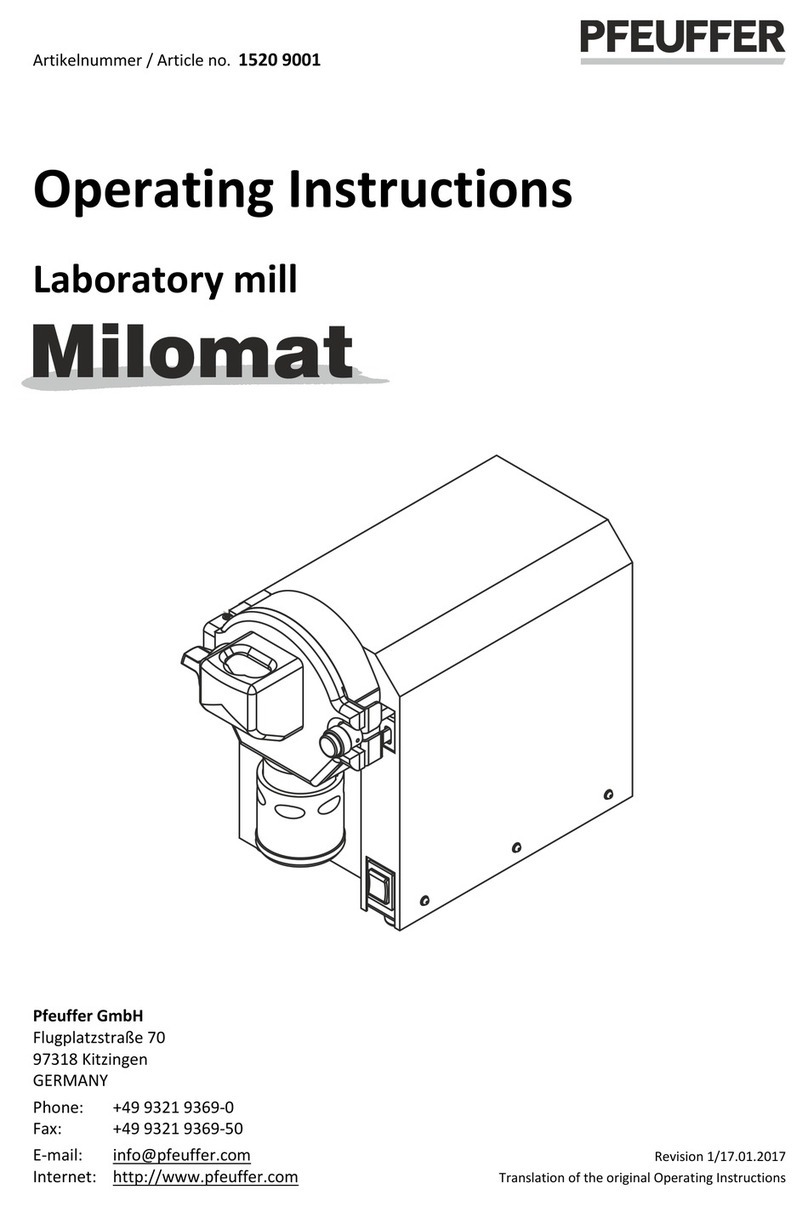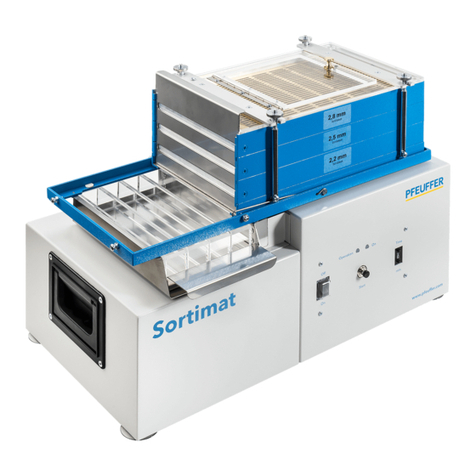
Revision 3 | Operating instructions sample cleaner MLN
1 Introduction..................................................................................................................................5
1.1 Intended use............................................................................................................................... 5
1.2 Declaration of conformity .......................................................................................................... 6
1.3 Structural features of the danger notes..................................................................................... 7
1.4 Pictograms in the operating instructions ................................................................................... 7
1.5 Identification .............................................................................................................................. 8
2 Safety ...........................................................................................................................................8
2.1 Installed safety systems ............................................................................................................. 8
2.1.1 Supply isolating device (plug/socket combination)....................................................... 8
2.1.2 System control............................................................................................................... 9
2.1.3 Limit switch system ....................................................................................................... 9
2.1.4 Protective caps .............................................................................................................. 9
2.2 Interfaces at sample cleaner MLN............................................................................................ 10
2.3 Operating and hazard areas associated with the machine ...................................................... 10
2.4 Operating and maintenance personnel ................................................................................... 11
2.5 Safety measures (to be implemented by the operating company) ......................................... 11
2.6 General safety instructions ...................................................................................................... 12
2.7 Safety tests ............................................................................................................................... 13
2.8 Residual hazards associated with the sample cleaner ............................................................. 13
2.9 Deactivation procedure............................................................................................................ 13
3 Technical data.............................................................................................................................14
3.1 Dimensions and weight ............................................................................................................ 14
3.2 Power supply ............................................................................................................................ 14
3.3 General information................................................................................................................. 14
4 Delivery, transport and storage...................................................................................................14
4.1 Scope of delivery ...................................................................................................................... 14
4.2 Transport and packaging .......................................................................................................... 15
4.3 Temporary storage ................................................................................................................... 15
4.4 Transport to installation location (of customer) ...................................................................... 15
5 Installation and commissioning...................................................................................................17
5.1 Positioning of sample cleaner MLN.......................................................................................... 17
6 Function......................................................................................................................................18
6.1 Components of sample cleaner MLN ....................................................................................... 18
6.2 Functional sequence ................................................................................................................ 19
7 Operation ...................................................................................................................................20





























